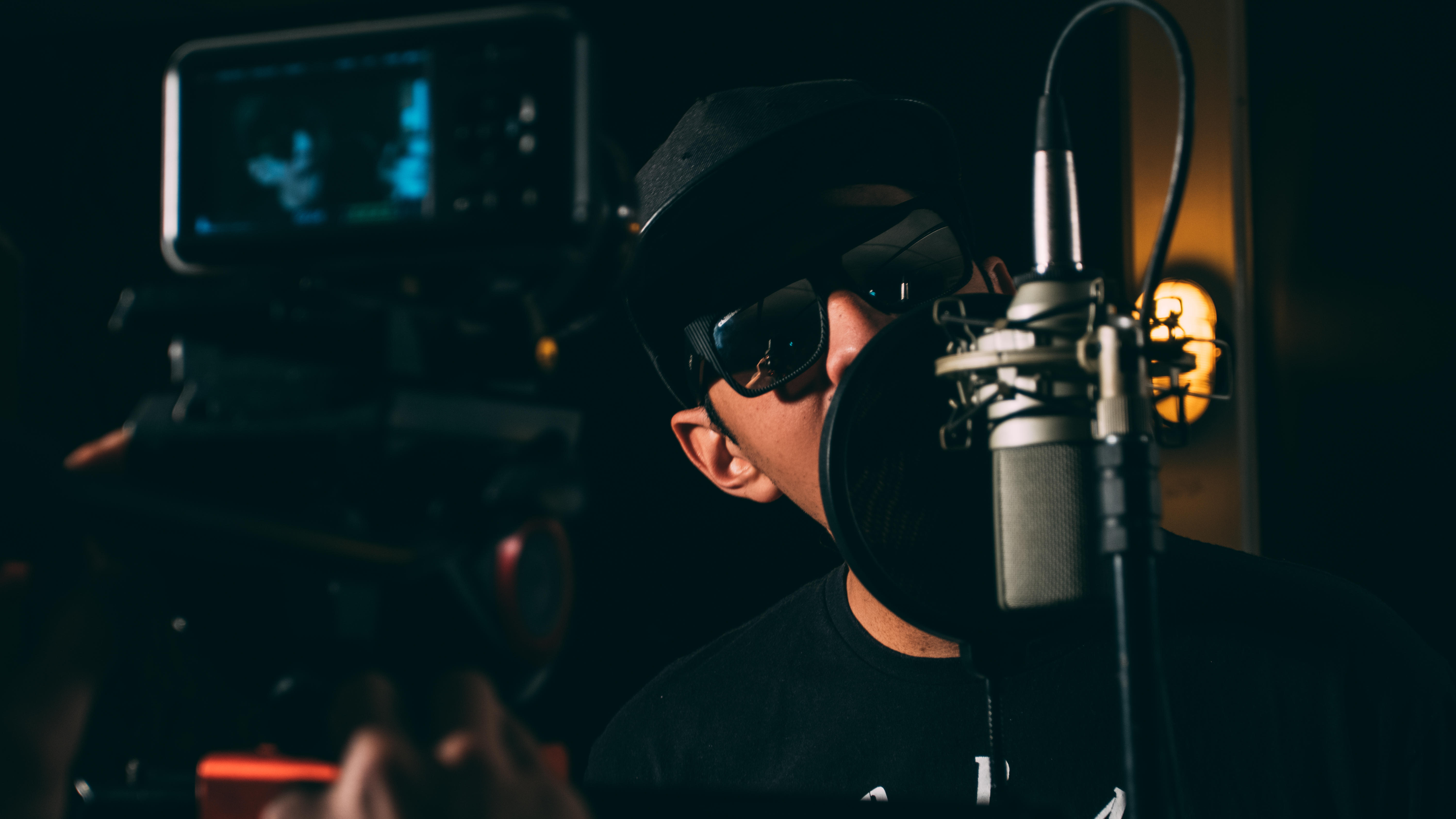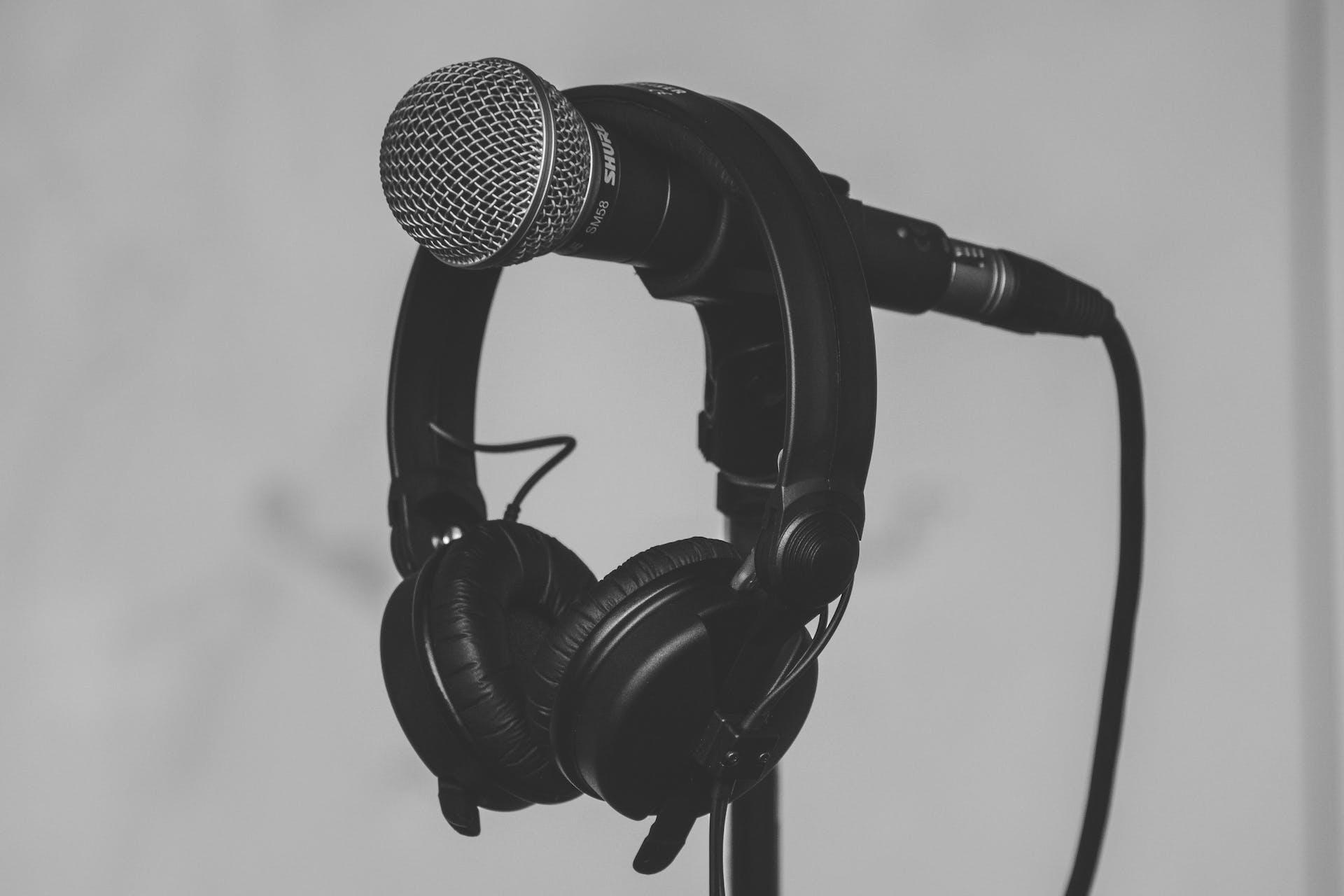The voice is a second face.
Gérard Bauër (1888-1967)
Many people can learn to sing, even without formal training. Self-taught singers are tenacious, passionate, and fearless, just like anyone who chooses to master an artistic discipline. While professional singing is a great way to learn how to sing, not everyone can afford lessons or have the time for them. Luckily, many famous singers have taught themselves, proving that with practice, determination, and the right techniques, anyone can work on their voice. In fact, some aspiring artists explore singing lessons san diego as a localized option.

Tips to Teach Yourself to Sing
As soon as we hear our favorite music, we can't stop increasing the volume and singing along. However, you'll need to adopt the right posture when you sing. There are a few things you have to keep in mind when learning to sing. Here are some of our favorite tips.
Physically and Mentally Preparing Yourself to Sing
Before you start singing, you need to ensure your body is in the right position since a good posture, like in sports, allows you to maximize your physical abilities.
You can find out about singing lessons in Pittsburgh here.
The basic rule is to have a straight back, either standing or sitting, with your legs parallel and aligned with your shoulders and your feet flat on the floor. A straight back allows the singer to open their chest cavity and fill their lungs with air. This also lets you produce nice notes more easily and sing in key.

Breathing: The Other Fundamental Rule
Since the voice is a wind instrument, breathing makes up 80% of singing. Slow and deep breathing exercises - breathing in and out slowly - can stimulate the abdominal muscles, giving your voice more punch.
Listen to Yourself
Once you start singing a song, you'll want to develop your style. However, not everyone can be their boss when learning to sing. Many shy people rush off to get a singing tutor, vocal coach, or online singing lessons. The only other option is to teach yourself how to sing.
Whether you're shy or fiercely confident in your abilities, there will be times when you start to get discouraged.
How can you sing well, and where should you start?
Firstly, you should listen to your voice, develop your ear (musically), and believe in your abilities and potential. A singer rarely has a perfect pitch or a finely-tuned musical ear when they start singing.
Training your vocal cords and sticking with them comes after you've gained self-confidence and become aware that anyone can get a good singing voice if they work at it, whether they teach themselves or work with a teacher.
Some people are more gifted at it than others, but even the worst voice can be corrected and improved. You need to know how to listen to yourself singing, whether you record yourself and do it later or if you do it in real time.

How to Teach Yourself to Sing
We should start our vocal training by learning how our voice works.
There are five fundamental elements to any good voice:
- Breathing: While breathing comes naturally, breathing when you sing is a very different set of skills. By controlling breathing with your diaphragm and opening your chest cavity, you can relax your body (which also alleviates tension) and circulate air around your body more effectively when you inhale and exhale.
- Elocution: This skill requires you to pronounce phonemes (consonants and vowels) well while singing.
- Rhythm: Knowing when to start and stop singing along with music is the hallmark of a great singer.
- Pitch: The pitch and quality of the notes you sing depends on whether you're sharp or flat when you sing (too high or too low in pitch). When you sing a song, the vocal parts must be in the same key as the song as you go from one note to another.
- Voice: Everyone's voice is unique and unlike any other. Your body, gender, age, vocal cords, and many other factors will determine the type of voice you have and its general qualities. It will also determine your vocal range and tessitura (the range of notes you can produce without too much difficulty).
Knowing your body will give you the information you need to correct any errors you make. Let's move on to more serious matters - how to work on your voice.
Exercises for Teaching Yourself to Sing
There are often several steps to take when achieving any goal. The same can be said for teaching yourself to sing.
Search for more detailed singing lessons in Atlanta here.
- Warm up your voice: Ideally, you should do this in the same place where you'd perform (like a stage). Every musician should do the same. A pianist will warm their fingers, and a trumpet player will practice breathing.
- Work on your vocal scales: Try a mid-range scale, then a low scale, before finally moving on to a high scale. Then, it would help to repeat this pattern until your voice is relaxed.
- Increase your volume: Progressively increase the volume before gradually decreasing the volume. This will help expand your vocal range.
- Move on to something more complicated: Sing the notes in a C major scale (including the semitones) and return to the original C. Singing all the notes (including the sharps and flats) will help increase your vocal agility and flexibility.
- Do scales for between 20 and 30 minutes to strengthen your vocal cords and find your range (be it tenor, baritone, alto, mezzo-soprano, or soprano).
You can use a piano to help you by singing each note being played on the piano. This can be useful for helping you find a song's key or ensuring you're in tune. Each famous singer will have done this. A piano is an invaluable tool for anyone teaching themselves to sing with the help of a private vocal coach.
Can You Teach Yourself To Sing?
As you'll see momentarily, many famous singers developed their voices without formal training. The key to learning to sing is discipline, structured practice, and consistent vocal training.
Make sure that you:
- Train your ear – Learn to recognize pitch, tone, and vocal placement.
- Understand vocal fundamentals – Proper breathing, posture, and technique improve vocal control.
- Use online resources – YouTube tutorials, vocal exercises, and apps can guide you.
- Record yourself – Listening back helps you track progress and make corrections.
While formal training can accelerate progress, it’s not mandatory to develop a great singing voice.

Learn to Sing with YouTube
You don't need to spend a lot on voice lessons given how many great YouTube channels there are with vocal coaches.
Here are just seven of them.
| YouTube Channel | Focus Areas | Link |
|---|---|---|
| Eric Arceneaux (AApproach) | Vocal workouts, warm-ups, vocal protection, breath control | https://www.youtube.com/user/EricArceneaux |
| Felicia Ricci | Singing with emotion, vocal tension release, high notes, mic technique | https://www.youtube.com/user/booklovin |
| 30 Day Singer | Beginner-friendly singing courses, vocal range expansion, daily exercises | https://www.youtube.com/c/30DaySinger |
| Jacob’s Vocal Academy | Karaoke practice, vocal scales, backing tracks | https://www.youtube.com/channel/UCmHvG9kF8TYF50W5JW-J8wQ |
| Ken Tamplin Vocal Academy | Rock/pop singing techniques, belting, vocal cord strengthening | https://www.youtube.com/user/kentamplin |
| Dr. Dan’s Voice Essentials | Healthy vocal habits, warm-ups, performance tips | https://www.youtube.com/c/DanielKayVoiceEssentials |
| SingWise Vocal Training (Karyn O’Connor) | Classical and contemporary singing techniques, breath control | https://www.youtube.com/c/SingWiseVocalTraining |
Here's one YouTube video you can watch to get you started.
Eric Arceneaux's YouTube channel is a good place to start. His YouTube videos cover a variety of different aspects of singing, from how to protect your vocal cords, vocal workouts, warm-up exercises, ways to sing in key, how to stand correctly, etc. Eric has plenty of great advice for those who've just started learning to sing!
Felicia Ricci has plenty of videos on how to improve your singing. She has tutorials on different aspects of singing: how to sing with emotion, how to sing without tension, how to sing into a mic, how to fix your singing using breath, and how to sing high notes, as well as videos on how to memorize songs and lyrics and how to relax your tongue while singing. There are plenty of videos on her channel that you'll find useful.
Learn to Sing on Your Own
Once you've got all the tools you need to get a good voice, it's time to use them wisely: practice, listen, then evaluate yourself.
To keep improving, recording your voice is a great way to gain a better understanding of your abilities and the errors you'll need to correct.

Filming yourself can be useful for:
- Seeing where you're going wrong when you make false notes.
- Looking at your gestures and correcting the unpleasant ones.
- Listening to the notes you make and ensuring that they're the right pitch.
- Listening to your vocal timbre, tessitura, and resonance.
- Improving your vocal range.
The best way to do this is to choose a song that you like, a song whose lyrics you've mastered, and sing it while recording yourself. You should then watch the video and see what isn't working and what is. Start again until you're happy with the recording.
Once you've done this, you should then show the video to a friend or family member so you can get constructive criticism and the positives and negatives of your performance.
Step 1
Develop Awareness of Your Voice
Listen to your natural vocal tone, record yourself singing, and identify areas for improvement.
Step 2
Learn Proper Breathing Techniques
Train your diaphragm with deep breathing exercises and control your airflow while singing.
Step 3
Work on Vocal Warm-ups and Scales
Start with gentle vocal exercises to strengthen your voice and improve pitch accuracy.
Step 4
Improve Your Ear for Music
Practice singing along with piano notes, backing tracks, or acapella to train your musical ear.
Step 5
Find Songs That Match Your Vocal Range
Choose songs that suit your natural voice—avoid straining to reach high or low notes.
Step 6
Use Online Resources
Follow YouTube tutorials and online lessons to refine your technique and build confidence.
Step 7
Record Yourself Regularly
Compare past recordings to track progress and make necessary adjustments.
Step 8
Start Performing in Front of Others
Begin with family and friends, then try karaoke nights, open mics, or small performances.
Step 9
Keep Practicing and Expanding Your Skills
Challenge yourself with new songs, techniques, and vocal exercises to keep improving.
Embarking on the journey of self-teaching singing comes with its own set of advantages and challenges. Here's a breakdown to help you navigate this path:
| Aspect | Teaching Yourself to Sing |
|---|---|
| Pros | Flexibility: Self-paced learning allows you to set your schedule. |
| Cost-Effective: No need for formal lessons can be more budget-friendly. | |
| Personalized Approach: Tailor your learning to focus on specific areas of interest. | |
| Privacy: Learn without feeling self-conscious in the comfort of your own space. | |
| Resource Variety: Access a wide range of online tutorials, videos, and apps for diverse learning materials. | |
| Exploration: Experiment with different singing styles and techniques at your own pace. | |
| Cons | Limited Feedback: Lack of immediate, professional feedback may slow progress. |
| No Guidance: The absence of a mentor may result in incorrect techniques going uncorrected. | |
| Isolation: Learning alone may miss the collaborative and supportive aspects of group learning. | |
| Limited Networking: You may miss out on valuable connections and opportunities within a structured learning environment. | |
| Discipline Required: Self-motivation is crucial; without a set schedule, progress may be inconsistent. | |
| Misinformation: Relying solely on online resources may expose you to inaccurate or conflicting information. |
Singing Alone: How to Move on to Singing in Front of an Audience
Many aspiring singers may avoid performing publicly due to stage fright or lack of confidence. However, going from singing on your own to in front of an audience is a key part of any singer's journey.
Here's one way to do it:
Step 1
Start Small and Build Confidence
Begin by singing in comfortable environments, such as your bedroom or while doing household tasks. This helps you develop confidence in your voice without external pressure.
Step 2
Record Yourself and Analyze Your Performance
Recording your singing sessions allows you to identify areas for improvement. Listen critically, focus on pitch and tone, and refine your technique before performing live.
Step 3
Perform in Front of Close Friends or Family
Singing in front of a trusted audience is a great first step toward public performances. Their feedback can be constructive and supportive, helping you build confidence in a low-pressure setting.
Step 4
Choose the Right Song
Select a song that fits your vocal range and feels comfortable to sing. Avoid overly complex pieces that could add unnecessary stress to your performance.
Step 5
Rehearse with a Microphone
If you plan to perform on stage, practicing with a microphone will help you get used to handling sound dynamics and projection.
Step 6
Find a Comfortable Venue
Consider performing at open mic nights, karaoke bars, or small gatherings where the atmosphere is relaxed. A familiar or casual setting makes it easier to sing in front of others.
Step 7
Manage Performance Anxiety
Pre-performance nerves are normal. Practice relaxation techniques like deep breathing, visualization, or light stretching to calm yourself before going on stage.
Step 8
Focus on the Music, Not the Audience
Rather than worrying about the crowd’s reaction, immerse yourself in the song and enjoy the moment. Confidence grows when you focus on expressing emotion through music.
Step 9
Learn from Each Performance
After performing, reflect on what went well and what could be improved. Each experience will make you a stronger and more confident performer.
Step 10
Keep Pushing Your Comfort Zone
Challenge yourself by gradually increasing the size of your audience. Singing at larger events or in competitions will help you refine your stage presence over time.
Here are some additional tips to help you go from singing in the shower to in front of an audience.
- Learning to sing on your own is more than possible. Only a lack of self-confidence will stop you from doing this, and that can be overcome.
- You can learn to sing in key on your own: there are plenty of famous singers who've managed this. However, be aware that this can take a lot of work. Learning to sing on your own can require more work than working on your voice with singing lessons or private singing tutorials.
- You can help yourself with online resources like YouTube channels and music websites.
- You should film yourself so that you can see where you're going wrong when you sing.
- You'll eventually need to move on to singing in front of an audience, even if they are just your friends and family at first.
If you ever feel lost when carrying out your vocal training, voice coaches are always available who can push you in the right direction. And if the cost of private singing lessons worries you, it's worth knowing that there are plenty of options for singers on a budget.
For aspiring vocalists in the Los Angeles area, you might consider exploring singing lessons los angeles to further refine your vocal skills.
The Greatest Self-Taught Singers
As with many things in life, it helps to have a role model to follow. This is particularly useful for singers who are working without the help of a voice coach or private singing tutor.
Here are a few examples of self-taught singers who all learned to sing in a variety of different ways.

Search for more detailed singing lessons in Jacksonville here.
Georges Brassens
🎤 Voice Type: Baritone
⭐ Known for: Poetic lyrics, chanson française, storytelling through music, and songs like Le Gorille and La Mauvaise Réputation
The French singer Georges Brassens (1921-1981) isn't the first singer you'd probably think of, but he became hugely successful in his time.
While he was a bad and shy student at school, his mother refused to give him music lessons until he started performing better. He learned to play guitar and sing by himself.
Despite his talent, Brassens was so shy that he initially didn’t want to perform his own songs. He overcame stage fright by waking up at 5 AM daily to practice.
During the Second World War, he wrote his first poems in a labor camp near Basdorf in Nazi Germany.
While living in poverty in the late 1940s and early 1950s, he wrote a number of songs which would later become hits: Hécatombe, La Mauvaise Réputation, Le Mauvais Sujet Repenti, La Prière, Je suis un voyou, Le Parapluie, Chanson pour l’Auvergnat, La Chasse aux papillons, J’ai rendez-vous avec vous, Brave Margot, Jeanne, Le Gorille, Je me suis fait tout petit, Saturne, Rien à jeter, and La Non-Demande en mariage. However, he didn't even want to become a singer.
He was shy and frozen by stage fright. He preferred that his poems be performed by singing stars. He taught himself music, poetry, and singing by waking up at 5 am every morning and working on his music until he went to bed.
Luciano Pavarotti
🎤 Voice Type: Tenor
⭐ Known for: Operatic bel canto technique, powerful and rich tone, and iconic performances of Nessun Dorma
When we think of beautiful voices, we often think of opera singers. Luciano Pavarotti (1935-2007) was one of the best tenors in recent years. Coming from a humble background, he wanted to be a teacher. Far from the career of a famous singer like we know him.
Pavarotti originally trained to become a teacher, but after years of self-learning in opera choirs, he became one of the greatest tenors in history.
He learned to sing in choirs in Modena and only really started his career at the age of 26 after having spent one year as a teacher.
We know him as a talented tenor because he helped make classical music more popular during this time and performed duets with famous groups like U2 and famous singers including Sting and Mariah Carey in charity concerts.
Prince
🎤 Voice Type: Tenor with falsetto
⭐ Known for: Wide vocal range, falsetto mastery, genre-blending music, and hits like Purple Rain and Kiss
With a different vocal timbre and style, there's Prince (1958-2016), the kid from Minneapolis. This eccentric musician was, above all, a genius. At the age of 20, he produced his first album on which he played 27 different instruments.
Prince was a multi-instrumentalist who played 27 instruments on his debut album, all self-taught. He recorded entire albums alone, layering each instrument himself.
He learned on his own, firstly with the piano and the guitar and teaching himself to sing. This wasn't a one-off, though. Prince produced all his albums on his own in the studio. He usually put down the piano first and recorded his voice last.
Some of his compositions required over 24 hours of non-stop work in the studio.
Learn about how you can find out about singing lessons in Chicago here.

Aretha Franklin
🎤 Voice Type: Mezzo-soprano
⭐ Known for: Soulful and powerful vocals, gospel-influenced phrasing, and classics like Respect and A Natural Woman
The Queen of Soul, Aretha Franklin (born in 1942), learned to sing in her father's choir at age six. She made public performances as part of her father's "Gospel Caravan Tours," where she sang solo parts at the age of 14.
This is where John H. Hammond discovered her, but it wasn't where she became famous. It wouldn't be until 1967 that the hits would come. She said that it wasn't until she went to Atlantic Records and sat in front of a piano that the hits started coming. She just needed to do what she felt like doing, and it worked.
She learned to sing in her father’s gospel choir at age six, and by 14, she was already performing on tour. Her big break came only after she embraced her natural style.
Eminem
🎤 Voice Type: Rap Vocalist
⭐ Known for: Complex lyricism, rapid delivery, storytelling in rap, and hits like Lose Yourself and Stan
Writer and rap artist Eminem (born in 1972) started on his own and is now one of the biggest-selling rap artists of all time. After a difficult childhood, Eminem discovered rap and started taking part in rap battles. He managed to build up his reputation as a white rapper in a predominantly black genre.
Eminem honed his rap skills through underground battles. His breakthrough came after years of practicing freestyling and lyric writing completely on his own.
To learn more about his motivation and how he got started, the film 8 Mile covers the whole story.
You Don't Need Formal Training to Sing Well
With successful singers and performers having mastered their craft without any formal training, the obstacle isn't necessarily a case of needing a singing teacher; it's a lack of self-confidence.
Patience and dedication are what every singer needs, whether they're working towards improving their voice or an important performance.
Your voice is like any other musical instrument, the more you practice, the better you'll get. Choose a song you love, record yourself, and analyze your performance.
















Really helpful article… wonderful
I would like to recommend to you a course from Singorama that could help learning how to sing.
I would suggest to read all the blog posts and get the free mini class to start and then evaluate if progress with the pro-training.
Hope it’s appreciated :-)
Thank you for this. Very helpful.
thanks. this was really helpful
Very comprehensive article, answered all my questions. Thank you !!!
Very informative and helpful. Thank you. Much appreciated.
Thank you for the information provided. I came across it by chance and it has given me a lot to think about.
Much appreciated.
This is ineteresting i really want to learn singing but i have no confidence with my voice if it is nice to hear by the other
I would like to ask do you know any good singing classes that aren’t on zoom near Kyneton Australia
Hello, please send us a message at hey@superprof.com where we can assist you.
Thanks, an encouraging article
eminem
? ok